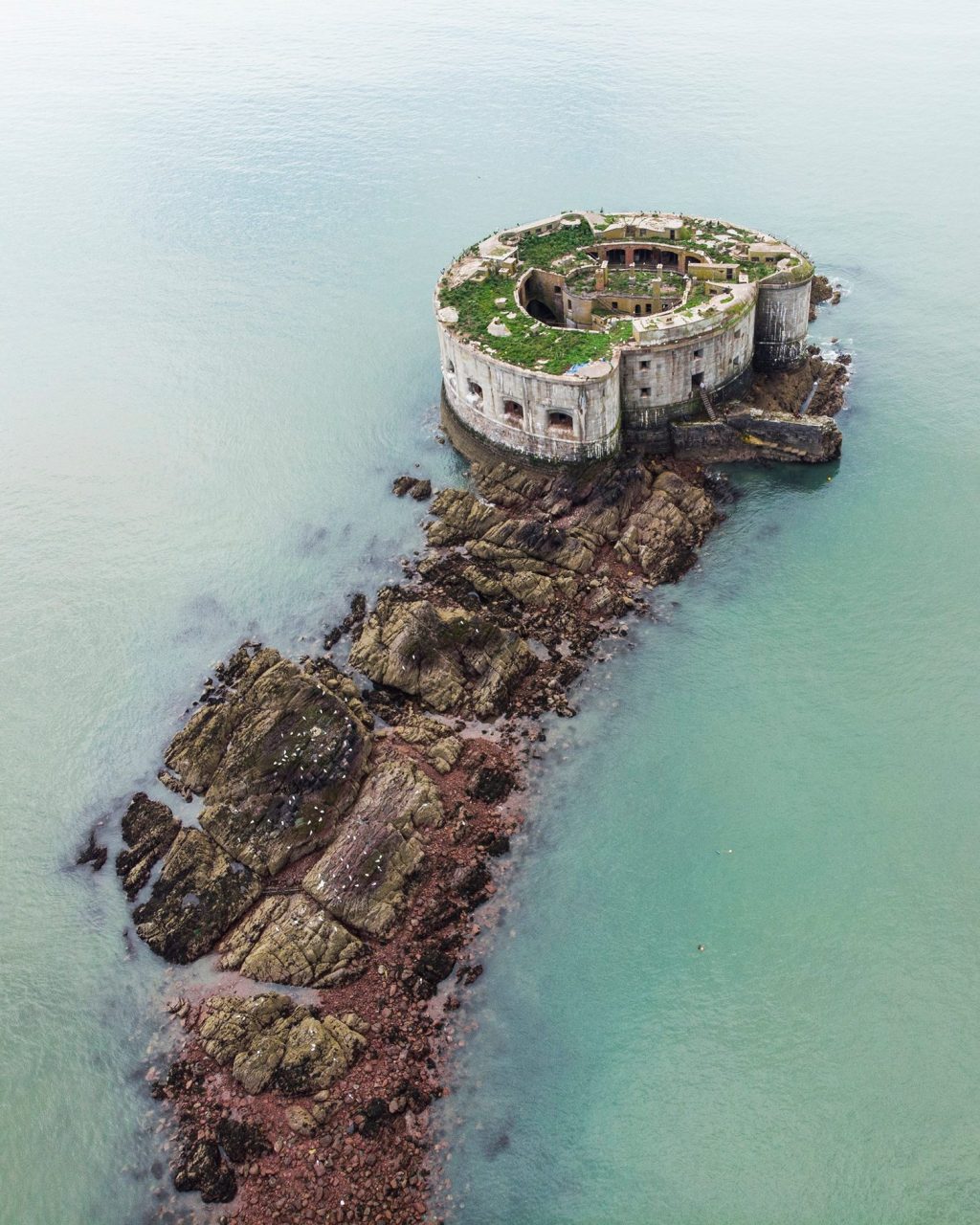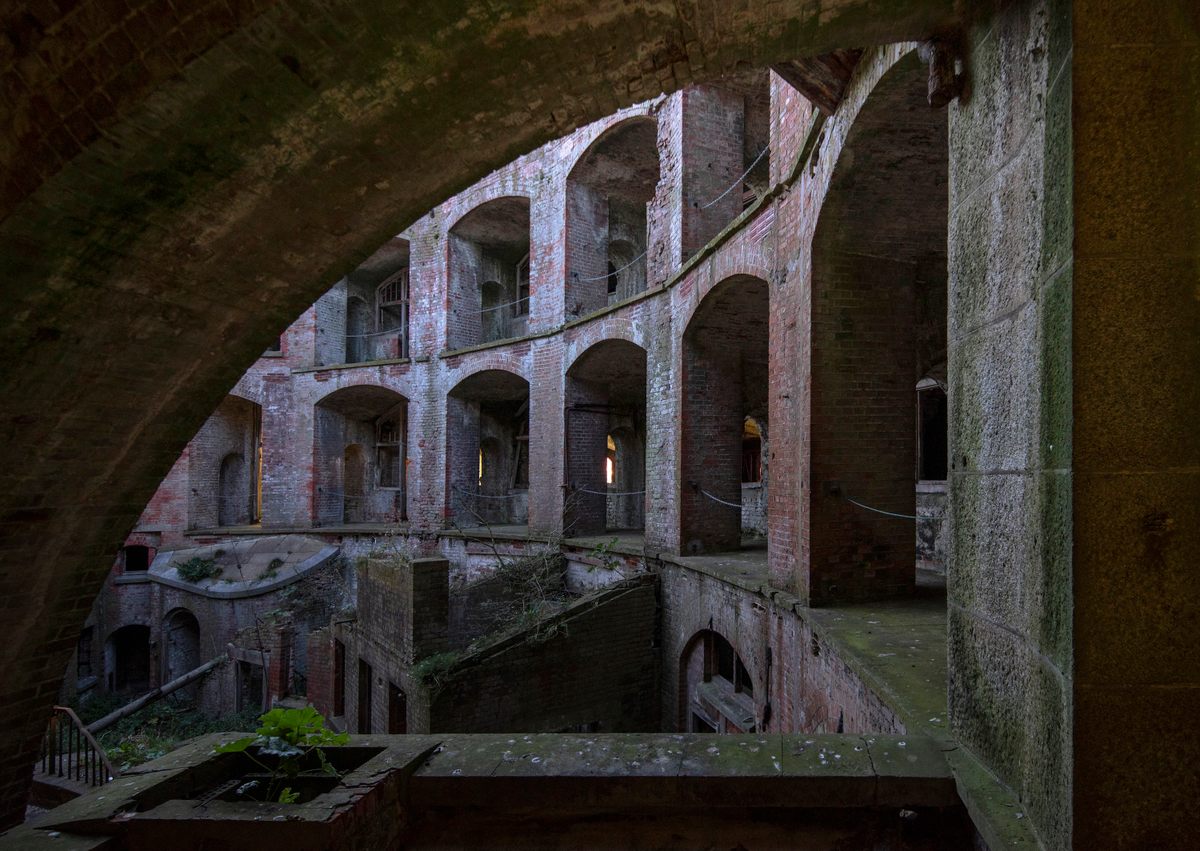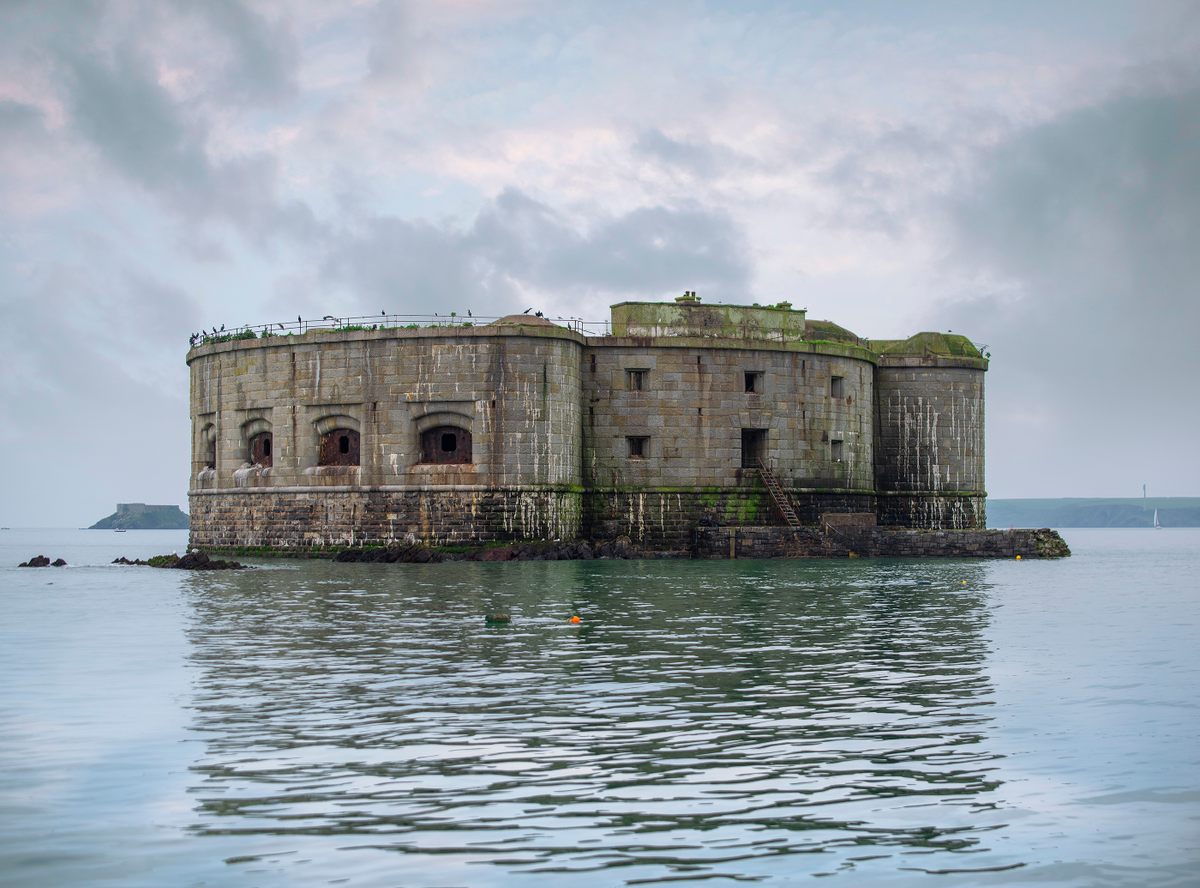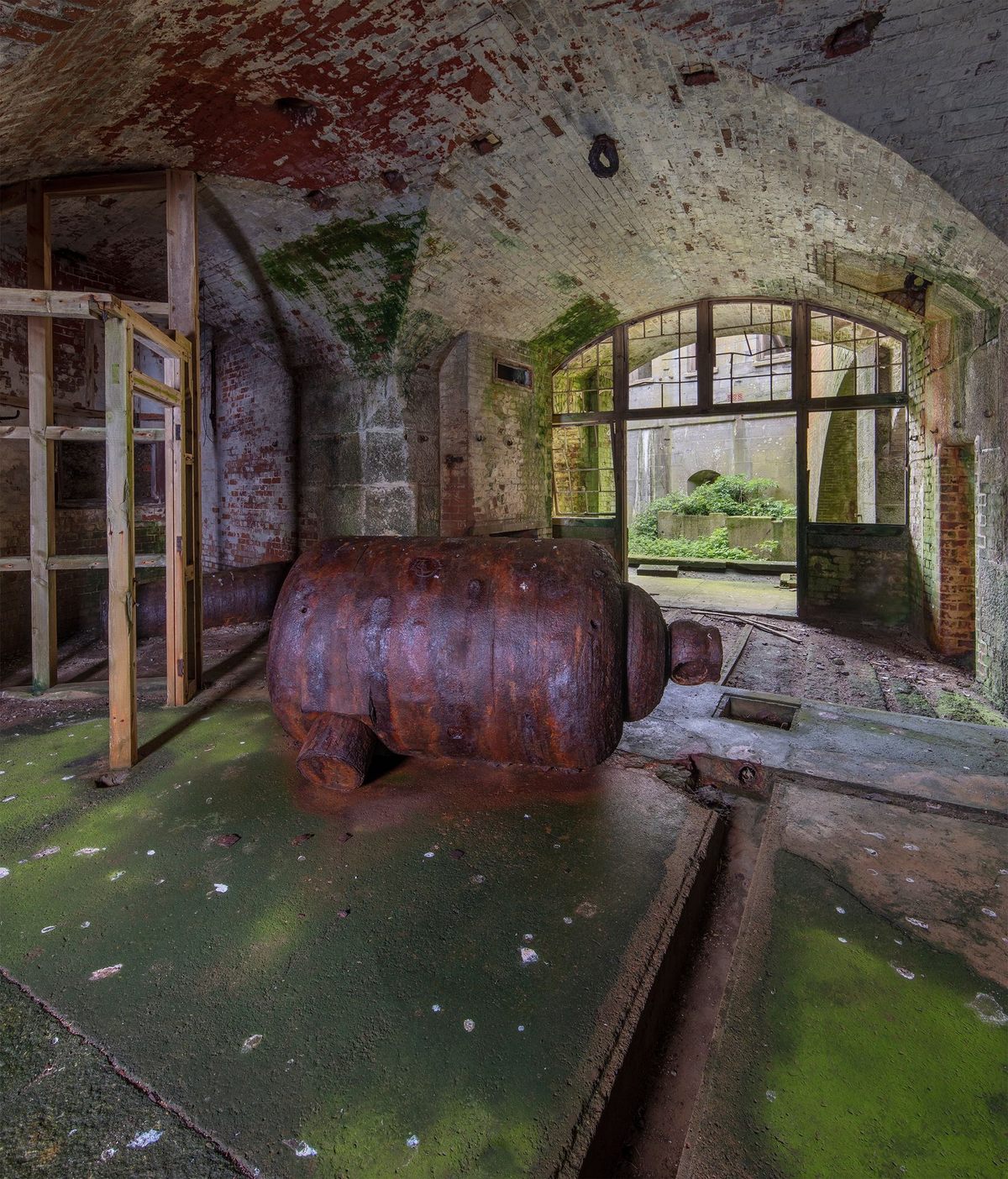Abandoned Victorian Sea Fort

Between 1850 and 1852, a mighty, squat stone fort rose from a low-lying island in the Milford Haven Waterway in Wales. Originally proposed by Thomas Cromwell, chief minister to King Henry VIII, more than 300 years earlier, Stack Rock Fort—about 800 yards off the coast—was built to protect the Royal Dockyard at Pembroke Dock from attack by sea.
It had a 30-foot tower, walls nine feet and nine inches thick, and housed three large cannons and one smaller one. A few years later casemates were added, and by 1870, the fort got a major makeover, inspired by the threat of Napoleon III. A new battery was added, able to hold up to 175 soldiers and five officers.
Most of the fort’s useful life was spent undergoing upgrades, and it only really saw active use during World War I. In 1929 it was finally decommissioned, disarmed, and scoured for useful materials. Since then, the lonely three-story fort has sat vacant but for crashing waves, nesting gulls, and opportunistic plants.
Now, nearly a century later, Stack Rock still stands. Inside, the past echoes through its eerie chambers: cannons sawed in half, skeletons of trapped birds in random rooms, and corroded control panels that were allegedly once linked to underwater minefields. The fort is now registered as a Grade II listed building and a scheduled monument, so any structural changes require special authorization.








